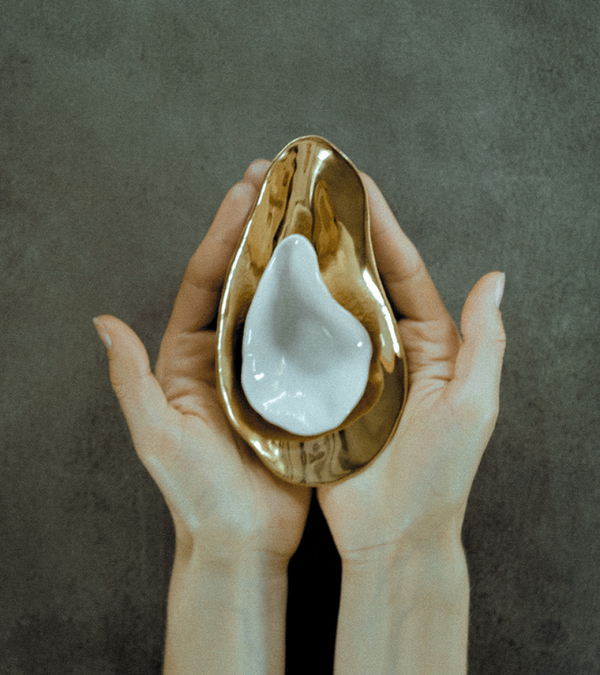There are quite a few porcelain production techniques, some of which are mechanical and industrial. These machines can produce very large quantities in a day, but need a high investment to start up the moulds and are not suitable for organic shapes with more complicated moulds. So, not something for me at this point.
With my very organic shapes, we decided to use a handmade technique called slip casting. After having created a model in my studio, I send it to the manufacturer who creates a plaster mould around it. From there, the first samples are made. If it turns out to be how we want it to be, a rubber mould is then produced from the first plaster mould : the “mother mould”, from which many identical plaster moulds can be made for the production.
This is how the process goes: liquid porcelain paste in poured into the plaster mould (which can be in 2, 3 ,4 or even 6 parts). After 20 --50min, depending on the size, the paste has hardened enough to open up the mould and take the shape out. Then it’s time for the finishing touches, taking away the lines and the marks the mould leaves on the shape without altering it, using different types of tools and sponges.
The raw object then has to dry completely for 2 to 4 days, depending on the size and the ambient temperature, before being fired a first time at 900ºC-1000ºC, called a bisque firing.
Now the glazing can begin. Most of my products have a glazed top and an unglazed bottom, leaving the texture untouched. This means the object is hand dipped into a large bucket of glaze, after which the bottom part has to be cleaned to leave it unglazed.
Once dry, the products are fired a second time at 1400ºC, melting the glaze and the porcelain into one strong piece. For the objects that need a golden or iridescent decoration, this is hand painted on top before being fired one last time at a lower temperature.
The whole process needs a lot of care, love and attention – resulting in elegant, high quality pieces with a handmade feel.









